Romincka - Natural monuments
At the end of the last Valdai glaciation, the retreating glacier left many traces in the territory of the Romincka Pushcha, and in the whole of East Prussia. According to rough estimates, there were 30 erratic boulders (from erraticus (lat.) - wandering - this is the name for huge unprocessed stone blocks, removed at a great distance (from several hundred to thousands of kilometers) from the sources of their formation) in the territory of today's Kaliningrad Oblast. Boulders of various sizes and shapes, which are now found in the Pushcha - all these are fragments of rocks, once brought by a glacier from the territory of today's Scandinavia.
Some of these boulders are marked on German maps as Erratische Blöcke. The largest ones are still in their places. There are eight erratic boulders in the Romincka Forest. Some of them even have their own names, for example, Teufelsstein (Devil's Stone), Breiter Stein (Wide Stone) or Annita (most likely named after the sister of the wife of the Romincka forester Witte, Annita Löwe).
A legend has developed about one such boulder, known as the “devil’s stone” or “devil’s stone.”
“One day, when a church was being built in Tolmingkemen and the foundations were already in place, a devil flew up to the workers and asked them what they were building. They were afraid to tell him the truth, and explained that they were building a tavern. The devil was pleased with this and promised to help with the construction. He diligently dragged stones to this place, but one day, when the church windows were finished, he realized that he had been deceived.
The devil got angry and decided to destroy the church by throwing a huge stone, which he was carrying through the air at that moment, onto it. But at the moment when he was about to let go of the stone, he heard a rooster crow three times in the pastor’s house. The devil couldn’t stand that. He trembled and the stone fell out of his claws, and since then it has been lying in the Forest. Anyone who sees it is glad that the devil was once deceived.”
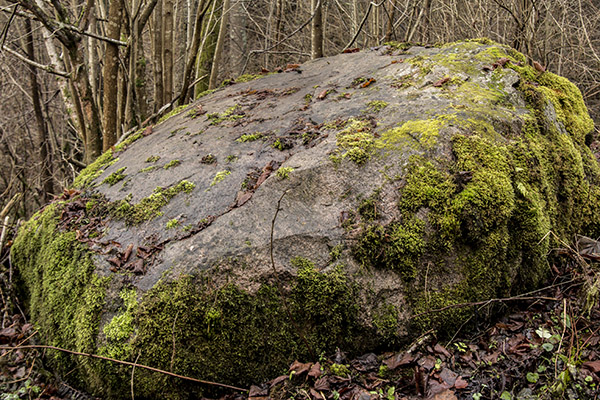
One of the largest erratic boulders is located near Mount Dozor. Its circumference is about 19 meters, and its height is more than 2.5 meters.
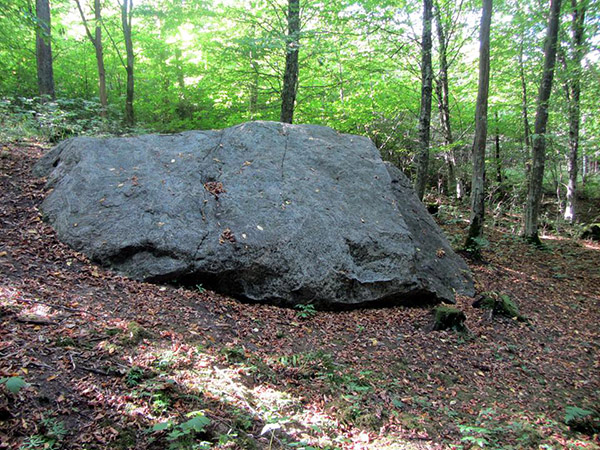
Some boulders show traces of processing, as the material obtained from them was used in the construction of house foundations and for the manufacture of millstones. Some of them were adapted for memorial and quarter stones. For example, now in the place marked on the German pre-war topographic map as ErrBlck, instead of an erratic boulder, you can see 6 signposts sawn from it. A similar situation can be observed in another place in Pushcha, where 3 posts lie in place of the stone.
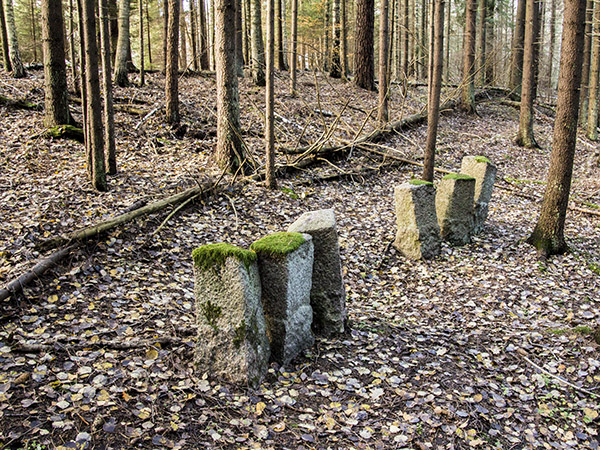
Another type of natural monuments of Rominta deserves special mention:
centuries-old or rare trees (oaks, beeches, hornbeams, firs, pines), designated
on German maps as Naturdenkmal (natural monument).
Speaking about the
history of the Rominta Forest ,
we mentioned that once a huge territory was covered with forests, called the
Great Wasteland, and including parts of today's Kaliningrad Region, Lithuania,
Poland and Belarus. Now, in addition to Rominta, the scattered islands of the
Great Wasteland include the Boretskaya Forest, the Biebrza Forest and the
Belovezhskaya Forest, which has best preserved its original appearance.
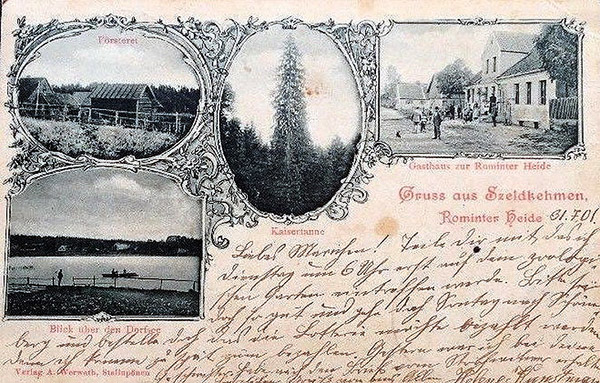
And although practically nothing has survived from the relict, virgin forest
that was the original basis of the Pushcha, in some places you can still find
centuries-old trees about 50 meters high.
Particularly large or prominent trees (like the stones mentioned above) received
proper names in honor of German emperors and their wives, prominent statesmen
and military leaders. For example, in the Romincka Pushcha there is an "imperial
spruce" and an "imperial beech", named in honor of Kaiser Wilhelm II.
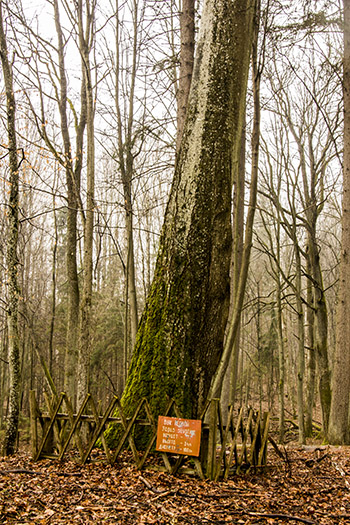
At present, several areas with centuries-old trees have been preserved. For example, the area of Mount Katharinenberg (near the settlement of Lesistoe) and an area on the right bank of the Krasnaya River, not far from the settlement of Sosnovka. There, surrounded by fences with explanatory signs installed nearby, more than a century-old seed pines, hornbeams and spruces rise up.
Natural monuments also include some plants that were named for their dendrological features, such as the spherical spruce, as well as introduced plants, such as the shrub birch, whose natural habitat is Transbaikalia and East Asia. Introduced plants were introduced into forest culture at the end of the 19th century, when the Pushcha was being restored after the invasion of the nun butterfly.
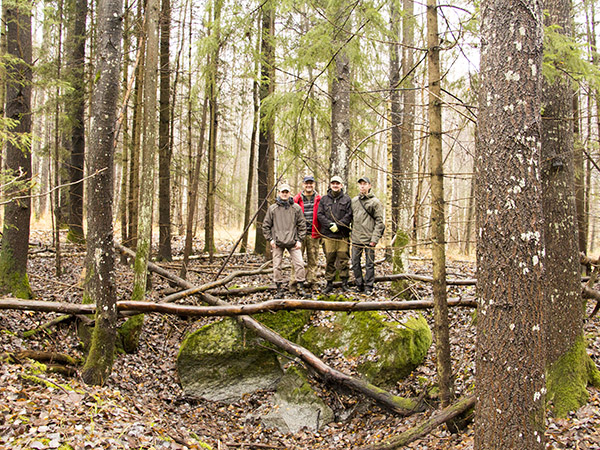
Sources:
Gautschi A. Rominten 1500 to 1945: An alphabetical list. Newman-Neudamm Melsungen, 2009.
Hinze C. East European Science: From Samland and the Kurdistan Region to the Roman Empire and the Masurian Empire. Cologne: Eugen Diederichs Verlag GmbH & Co. KG, 1983.
Rothe W. Dörfer der RominterHede. — Prussia-reihe, 2004.
Archive of the Vishtynetsky Ecological and Historical Museum.
